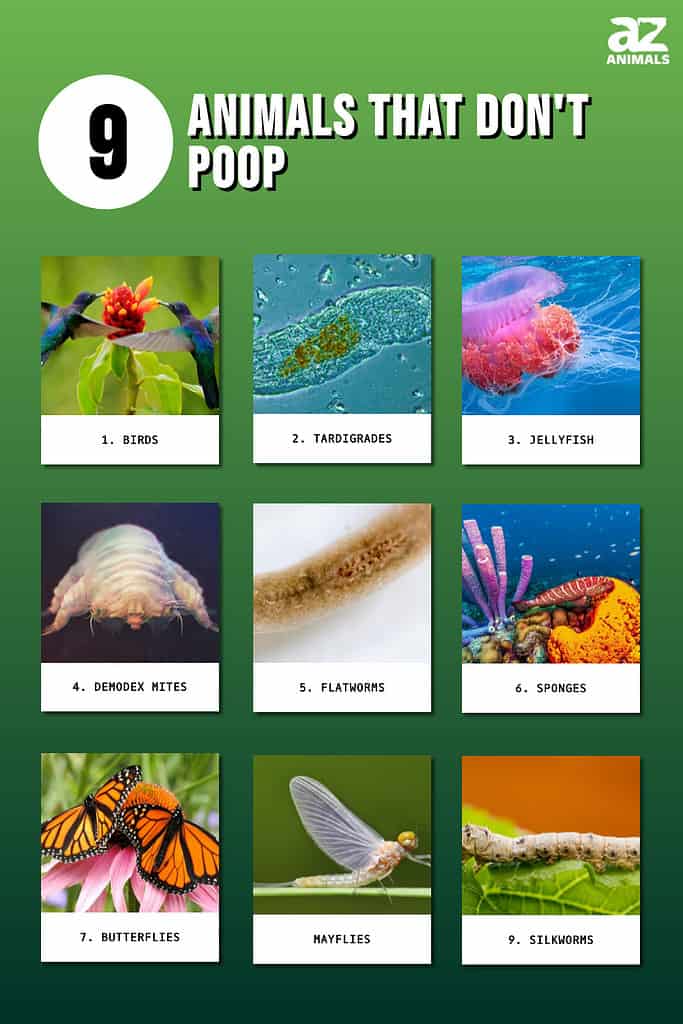
All living organisms must get rid of waste in their bodies, right?
Because vertebrates poop, it’s normal for humans to think other animals must poop as well. But some animals don’t do that — there are even some that don’t get rid of waste at all!
These creatures have developed alternative means that are unique, shocking, and sometimes even repulsive. Alternatively, they may not live long enough to have to poop at all.
These animals that don’t poop prove that nature is far more interesting than at first glance.
If you’ve ever wondered how it’s possible to live without pooping, meet 9 animals that will shock you with how their bodies eliminate by-products.
#9 – Silkworms

Silkworms feed, defecate, then build cocoons.
©Deborah Lee Rossiter/Shutterstock.com
Silk moths abandoned a longer adult lifespan in favor of an explosion of reproduction. After a female silk moth lays eggs, silkworms hatch from them as larvae.
They then feed on mulberry leaves until they reach the pupa stage, which is when they spin cocoons around themselves.
But before doing so, they make a giant poop to avoid pooping inside the cocoons. After about two weeks, they emerge as adult moths.
Having no mouthparts, they only live for a couple of weeks, their total lifespan being 6 to 8 weeks long.
#8 – Mayflies

With such an abbreviated lifespan, the mayfly doesn’t even possess a digestive system.
©Achkin/Shutterstock.com
Another creature that doesn’t live long, the mayfly lacks a digestive system altogether.
Undergoing metamorphosis when it’s born until it reaches adulthood, it hatches from an egg as a nymph, then becomes a merger, has a brief sterile phase as a dun or subimago, and finally becomes a colorful, full-grown adult called a spinner.
Since the focus of its life is reproduction, it doesn’t even have a mouth. After mating, males fly off to die and females lay eggs and die from exhaustion.
#7 – Butterflies
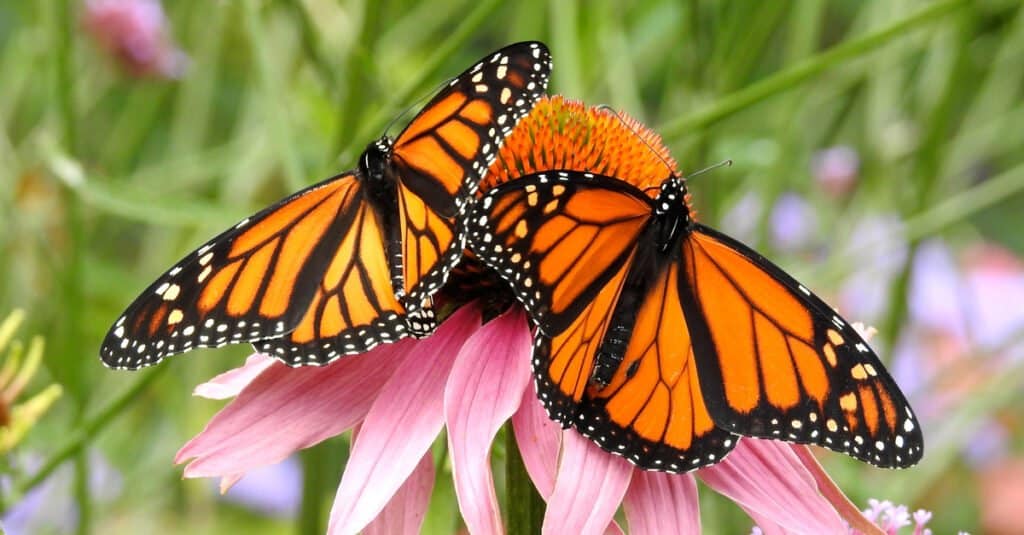
Butterflies cannot poop because they only drink nectar.
©Kate Besler/Shutterstock.com
Adult butterflies do not do number two, or even number one, because they drink only nectar.
When they excrete it, it comes out as a fine spray of water from the tip of their abdomens or the liquid waste leaves their respiratory systems when they fly. They release this “mist” once their bodies have become very full of liquid.
In fact, it can’t even be called urine because it’s almost pure water. The droplets vary in consistency and may be clear or cloudy. The liquid amount can also be quite disproportionate to the size of the butterfly.
Butterflies don’t bite or chew because they don’t have any teeth. They eat with a long tube-like straw, allowing butterflies to suck up liquids like nectar, sap, and juice from rotting fruit. This long tube tongue is called a proboscis. A butterfly’s taste buds are located in 3 places: the proboscis, antennae, and feet. They taste with their feet!
#6 – Sponges
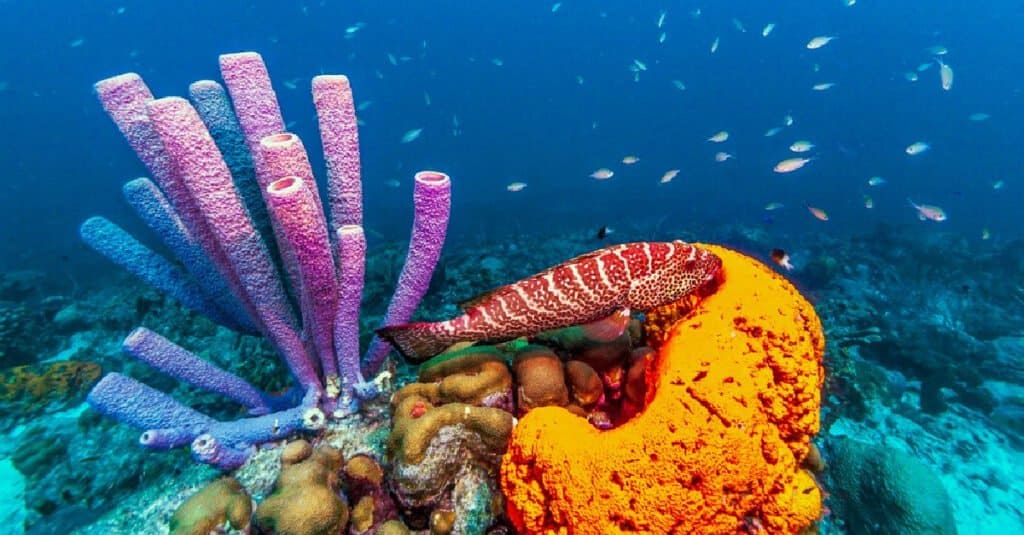
Sponges filter water rather than defecate in the traditional manner.
©John A. Anderson/Shutterstock.com
Sponges are ancient, strange creatures that have specialized cells for certain functions but do not have organs or true tissues.
Neither can they photosynthesize. Instead, they filter the water they take into their bodies. They excrete a form of “sponge poop” which is carbon that other organisms feed on.
This process has a very interesting benefit: Since organic dissolved carbon is inedible to most creatures, sponges consume it for most of their diet without storing it.
They accumulate it, convert it to an edible food source, and shed their newly divided cells for other organisms to consume.
#5– Flatworms
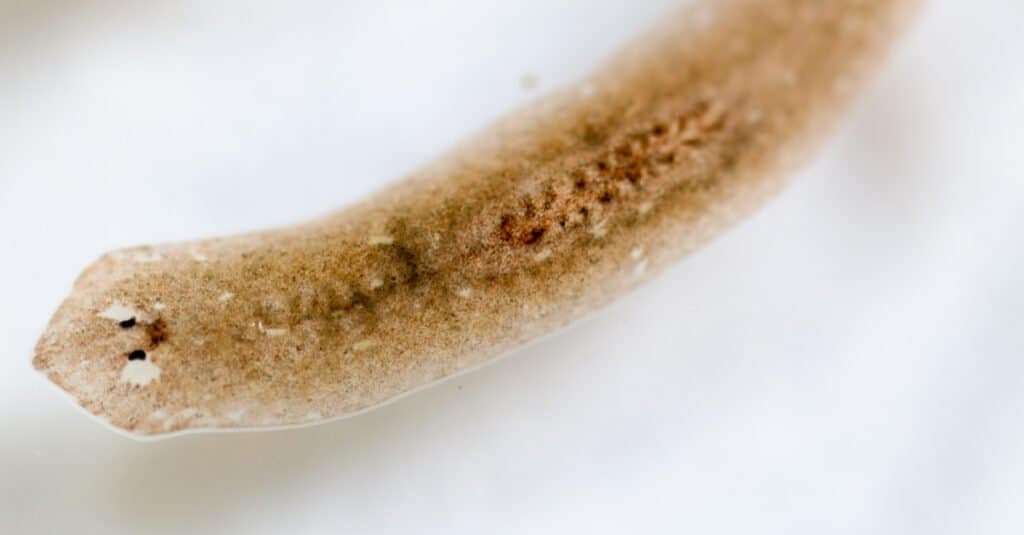
Flatworms do not have an anus from which to release poop, so it comes out the same way it goes in — through their mouths.
©Rattiya Thongdumhyu/Shutterstock.com
More than half of all flatworm species are internally parasitic to humans and livestock.
Although they have a mouth, pharynx, some amount of intestines, and several sense organs, they lack an anus, respiratory and circulatory systems, and are unsegmented.
With no digestive specialization, food goes into the mouth and wastes come out through the same passage.
#4 – Demodex mites

Demodex Mites only live for around two weeks, so they store waste without releasing it.
©Kalcutta/Shutterstock.com
These microscopic mites live in human hair follicles, specifically in the sebaceous and hair follicle glands of the face, in small numbers or individually.
These eight-legged organisms are distantly related to spiders. There are two kinds, Demodex folliculorum, and Demodex brevis.
In immunocompromised people, they can cause a condition called demodicosis. The symptoms are itch, sensitive skin, redness, and follicular scales along with pigmentation, folliculitis, eczema, papules, and macules.
For the rest of us, they’re always there, although they tend to come out at night when we’re asleep. It doesn’t matter how much you scrub your face, either — unless you’ve got an infestation, there’s no point in trying to get rid of them.
These tiny creatures do not have anuses at all, since they only live for about 2 weeks. Instead, they have elongated abdomens with large specialized cells to store waste in.
#3 – Jellyfish

Jellyfish expel waste through the same hole where they take in food.
©Chai Seamaker/Shutterstock.com
Jellyfish are more colorful and fascinating to look at than flatworms, but they are similar in their excretion of waste. Most animals have two holes, one for a mouth and one for an anus.
Not so with these mysterious creatures! Instead of digesting things linearly, with specialized cells for taking in a variety of nutrients, jellyfish have a “manus.”
And it’s said they don’t throw up or poop, but instead “Throop.” Talk about throwing people for a loop!
#2 – Tardigrades
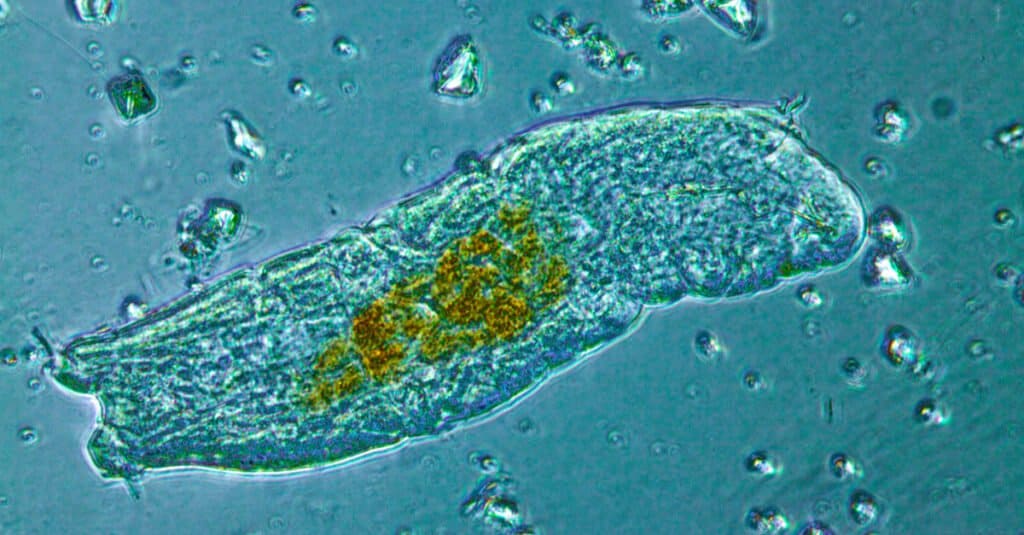
Among the most resilient animals, tardigrades have survived exposure to outer space. They also defecate only during their molting phases.
©Tobetv/Shutterstock.com
Many tardigrade species only excrete waste when they molt. The alien-looking but somewhat cute “water bears” or “moss piglets” molt four to twelve times during their lifetimes.
During the molting phase, their mouths close and they cannot eat while they eject the lining of their foreguts, hindguts, claws, and old cuticles through their buccal openings (mouths).
They then excrete the feces of digested lichens and algae through their anuses.
#1 – Birds
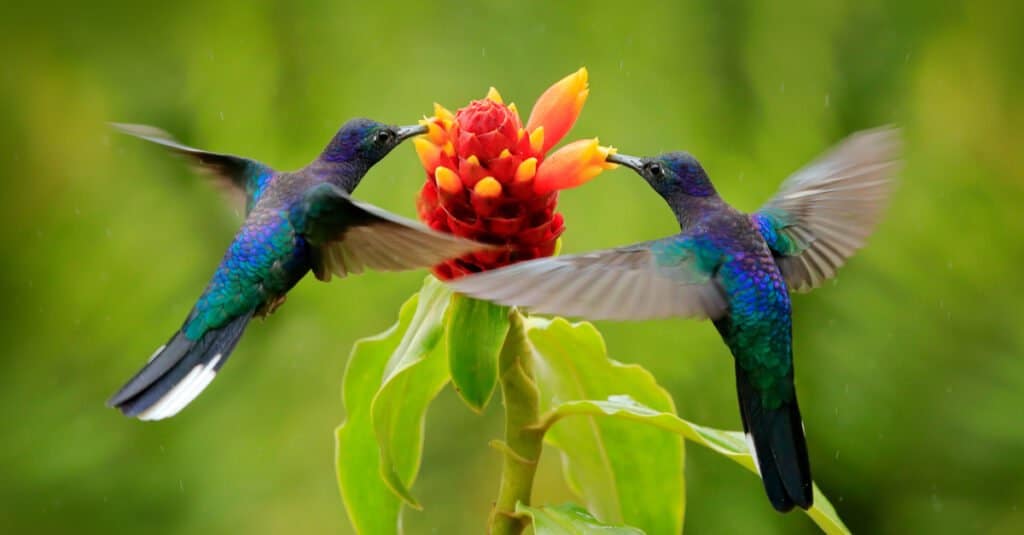
Birds, such as these hummingbirds, possess a cloaca, which expels both urine and feces.
©Ondrej Prosicky/Shutterstock.com
Birds don’t poop the way mammals do, with separate passages for urine and feces. Instead, they have one passage, called the cloaca, that excretes both urine and feces.
Another difference is that mammals excrete the end product urea into their feces, but birds convert urea into uric acid, also known as guanine.
That’s why the bird expels a substance that has dark poop in the middle surrounded by white urine.
Not all birds pee and poop at the same time, though – ostriches pee through the cloaca before they poop.
Honorable Mentions: Three More Animals That Don’t Poop
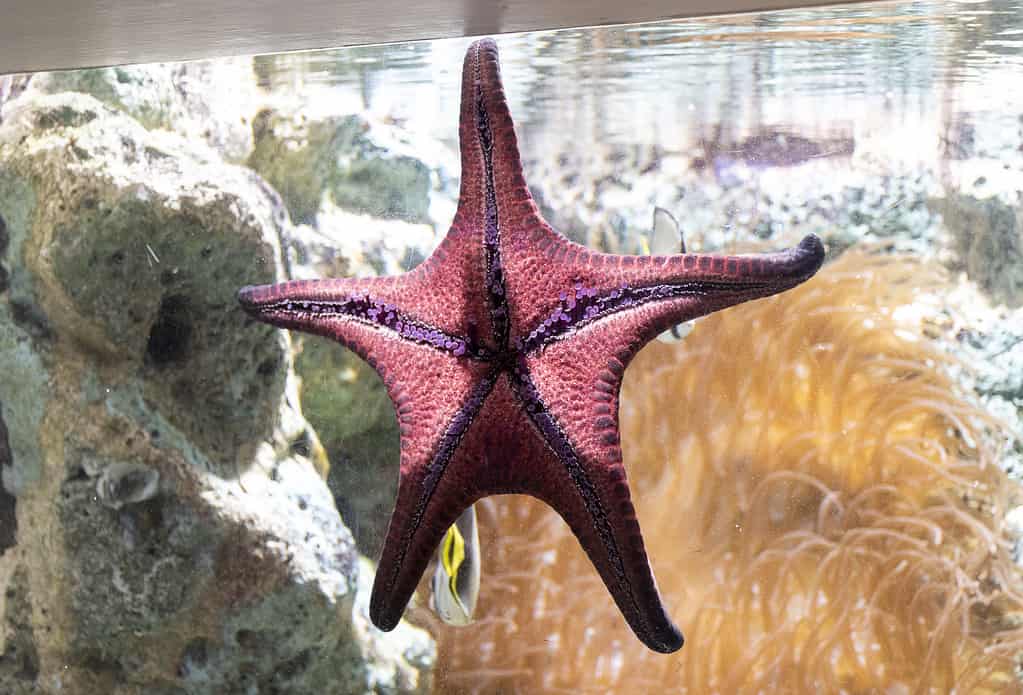
Starfish
do not possess anuses, instead forcing waste out through their tubular feet.
©Ratchapon Supprasert/iStock via Getty Images
While we’ve explored quite a few animals that don’t poop in the traditional sense, there are more out there that can lay claim to the same to the same skill. You may not be surprised to hear that all three of these animals, like others we talked about, inhabit oceans worldwide.
Sea urchins don’t poop like most animals due to their unique digestive systems. They instead eliminate waste through their tube-like feet. Similarly, starfish also force waste out through their tube-like feet as they don’t possess anuses.
Sea anemones don’t have typical digestive systems. Their tentacles grab and digest food, absorbing the nutrients they need for survival. Waste, which is not solid, is expelled through their mouths.
Summary of the Animals That Don’t Poop
The animal kingdom is always full of surprises, some nice and some more like this list. Here’s the breakdown of the animals that don’t pass their poop.
| Name | Animal Type | Vertebrae Type |
|---|---|---|
| 1. Birds | Avian | Vertebrate |
| 2. Tardigrades | Microscopic | Invertebrate |
| 3. Jellyfish | Cnidaria | Invertebrate |
| 4. Demodex mites | Microscopic | Invertebrate |
| 5. Flatworms | Worms | Invertebrate |
| 6. Sponges | Porifera | N/A |
| 7. Butterflies | Insects | Invertebrate |
| 8. Mayflies | Insects | Invertebrate |
| 9. Silkworms | Caterpillars | Invertebrate |
Which Animal Poops the Most?

Blue whales
can excrete up to 200 liters of poop in one bowl movement.
©Andrew Sutton/Shutterstock.com
The blue whale produces more poop than any other animal – up to 200 liters in one bowel movement. Their poo is a key nutrient for the ocean environment – creating vast pastures for small fish and krill to feed on. As the whales defecate, they swim along beating their tails to distribute the poo evenly, and dive to ensure that it is mixed into different water levels. Whales eat the krill that eats their poop – so, the circle of life continues.
The photo featured at the top of this post is © Kate Besler/Shutterstock.com
Thank you for reading! Have some feedback for us? Contact the AZ Animals editorial team.






